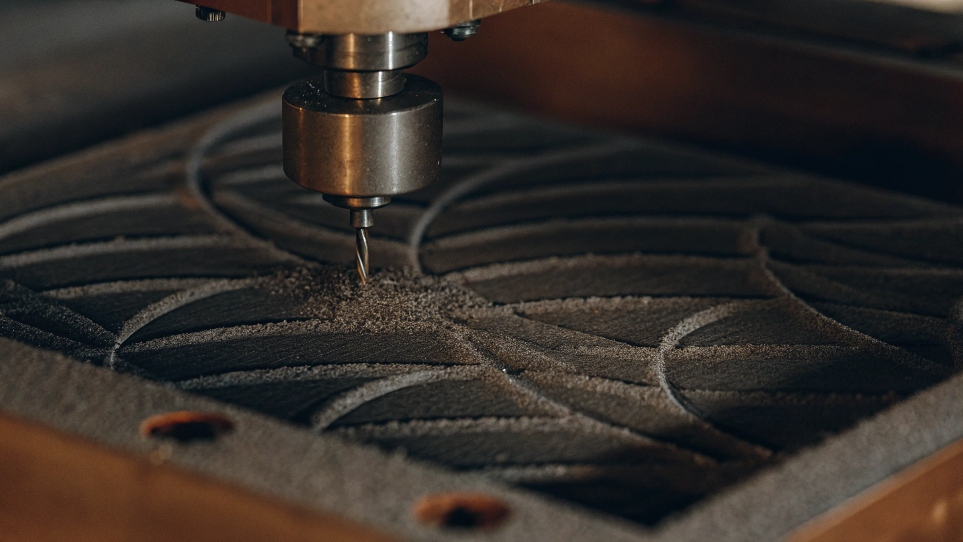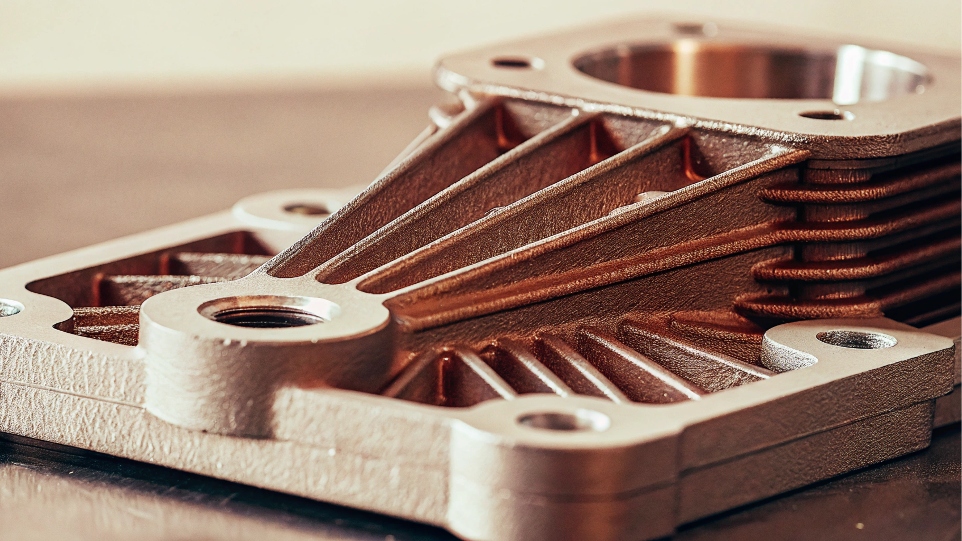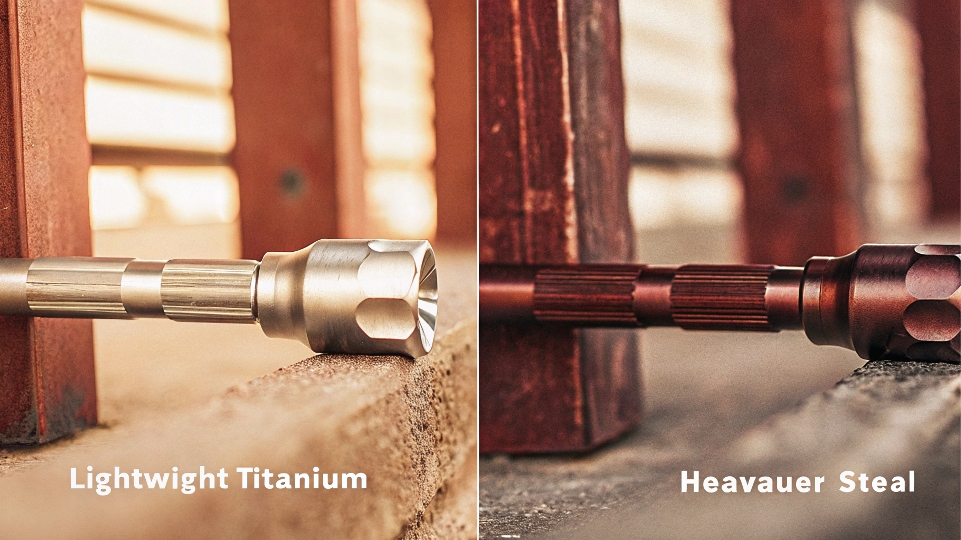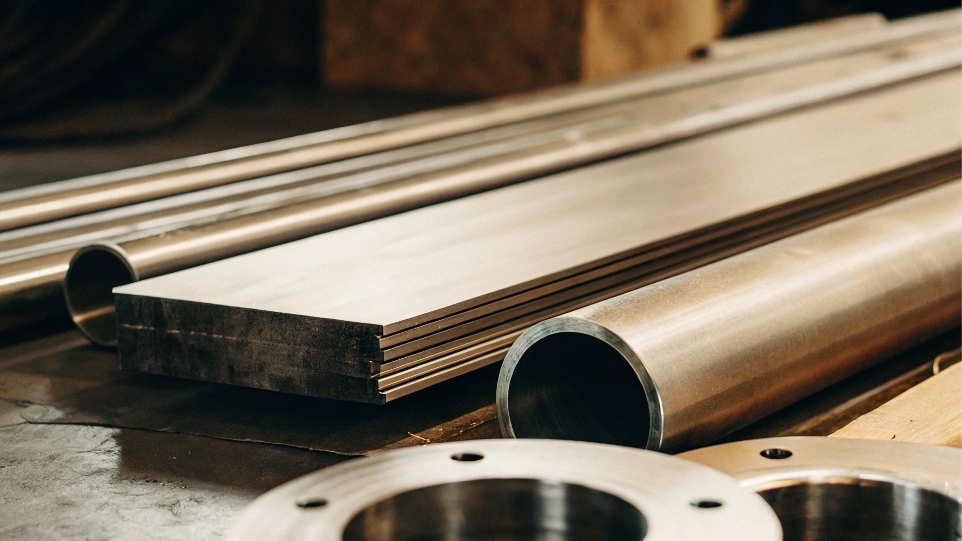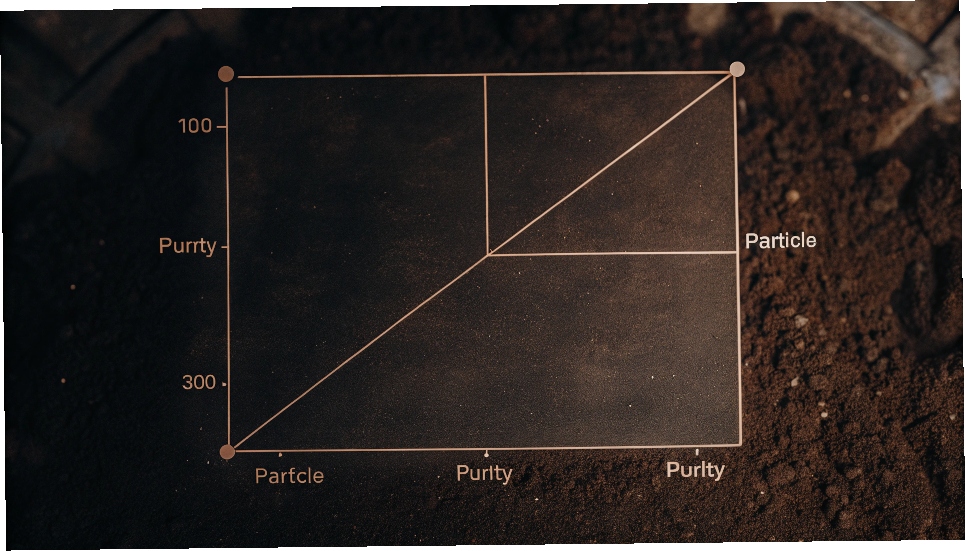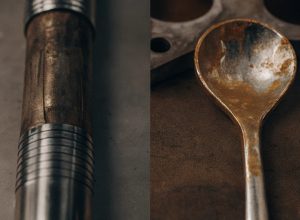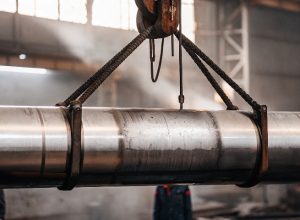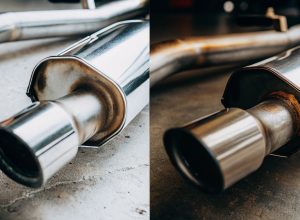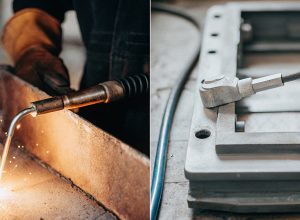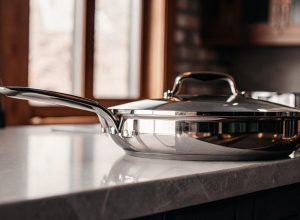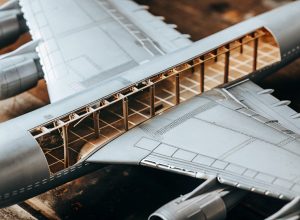¿Le cuesta encontrar un material para piezas complejas y sometidas a grandes esfuerzos? Los métodos tradicionales son caros y limitados. El polvo de titanio desbloquea la fabricación de nueva generación para ofrecer un rendimiento superior y libertad de diseño.
El polvo de titanio se utiliza principalmente en fabricación aditiva1 (Impresión 3D2), componentes aeroespaciales, implantes biomédicos y revestimientos protectores. Su alta resistencia, bajo peso y excelente resistencia a la corrosión lo hacen esencial para las industrias que exigen materiales avanzados e ingeniería de precisión.
Hablo a menudo con jefes de producto como Lisa. Necesitan encontrar el mejor material que cumpla las estrictas normas de rendimiento pero que también se ajuste al presupuesto. El polvo de titanio aparece a menudo en nuestras conversaciones. Es un material fascinante con mucho que ofrecer. La clave está en entender cómo se aplican sus distintas formas y ventajas a proyectos concretos. Veamos más de cerca cómo se utiliza y por qué puede ser la elección correcta para su próximo proyecto.
¿Para qué se utiliza el titanio en polvo?
¿Está diseñando piezas con intrincados canales internos o entramados ligeros? Fabricarlas con fundición o mecanizado tradicional suele ser imposible. El titanio en polvo hace realidad estos complejos diseños.
El titanio en polvo se utiliza para construir piezas complejas capa a capa en la fabricación aditiva. También se utiliza en el moldeo por inyección de metal (MIM) y para crear revestimientos superficiales duraderos que protegen los componentes del desgaste y la corrosión en entornos agresivos.
Cuando hablamos de titanio en polvo, en realidad estamos hablando de dar a los ingenieros una increíble libertad de diseño. Hace poco trabajé con un cliente de la industria aeroespacial. Necesitaban un nuevo soporte que fuera 40% más ligero que el antiguo de acero, pero igual de resistente. Utilizamos polvo de titanio e impresión 3D para crear una pieza con una estructura interna compleja, casi como el hueso de un pájaro. Este diseño habría sido imposible de mecanizar. Aquí es donde el polvo de titanio brilla de verdad.
Fabricación aditiva (impresión 3D)
En la impresión 3D, un rayo láser o de electrones funde el polvo de titanio capa a capa, fusionándolo para crear un objeto sólido directamente a partir de un archivo digital. Este proceso es perfecto para la creación rápida de prototipos y la producción de piezas personalizadas con geometrías complejas. Reduce significativamente el desperdicio de material en comparación con la fabricación sustractiva, en la que se corta a partir de un bloque sólido.
Aeroespacial y defensa
La industria aeroespacial utiliza polvo de titanio para crear componentes estructurales ligeros, piezas de motor y trenes de aterrizaje. Cada kilogramo ahorrado en el peso de un avión ahorra miles de dólares en combustible a lo largo de su vida útil. La capacidad del material para soportar temperaturas y presiones extremas también es fundamental para estas aplicaciones de alto rendimiento.
Implantes biomédicos
El titanio es biocompatible, lo que significa que el cuerpo humano no lo rechaza. Esto hace que su forma en polvo sea ideal para imprimir en 3D implantes médicos personalizados como articulaciones de cadera, jaulas espinales y coronas dentales. Las estructuras porosas que pueden crearse con el polvo permiten que el hueso crezca en el implante, creando una unión más fuerte y permanente.
| Área de aplicación | Ventajas clave | Por qué se utiliza el polvo de titanio |
|---|---|---|
| Fabricación aditiva | Libertad de diseño | Permite crear piezas complejas y ligeras imposibles de mecanizar. |
| Aeroespacial | Fuerza-peso | Reduce el peso del avión, mejorando la eficiencia del combustible y el rendimiento. |
| Biomédica | Biocompatibilidad | Crea implantes no tóxicos y resistentes a la corrosión que se integran en el cuerpo humano. |
¿Qué ventajas tiene el polvo de titanio?
¿Se pregunta si un material puede ser fuerte y ligero a la vez? Muchos metales fuertes son muy pesados, lo que limita su uso. El polvo de titanio ofrece lo mejor de ambos mundos, ya que proporciona una resistencia excepcional sin penalizar el peso.
Las principales ventajas del polvo de titanio son su extraordinaria relación resistencia-peso, su excelente resistencia a la corrosión y su capacidad para crear piezas complejas con una forma próxima a la red. Esto reduce los residuos, el tiempo de mecanizado y los costes generales de producción de componentes complejos.
A menudo explico a los jefes de producto que las ventajas del titanio van más allá de las propiedades de la materia prima. Se trata de cómo esas propiedades cambian las posibilidades de fabricación. Cuando se puede fabricar una pieza muy parecida a su forma final directamente desde la impresora, se ahorra mucho tiempo y dinero en el procesamiento secundario. Es una gran ventaja para las empresas que intentan seguir siendo competitivas.
Relación resistencia/peso superior
El titanio es tan resistente como muchos tipos de acero, pero aproximadamente 45% más ligero. Esta es su característica más famosa. Para cualquier aplicación en la que el peso suponga una penalización, como en un coche de carreras o un satélite, utilizar titanio ofrece una ventaja directa de rendimiento. Esta propiedad se conserva perfectamente cuando el metal está en forma de polvo.
Excepcional resistencia a la corrosión
El titanio forma de forma natural una capa de óxido protectora muy estable en su superficie cuando se expone al aire o a la humedad. Esta capa lo hace increíblemente resistente a la corrosión del agua salada, los productos químicos industriales y los ácidos. Para una empresa como Lisa's, que fabrica equipos químicos, esto significa piezas más duraderas y fiables que no fallarán en entornos difíciles.
Libertad de diseño con Near-Net-Shape Manufacturing
Por "forma casi neta" se entiende que la pieza sale del proceso de fabricación con un aspecto muy parecido a su forma final. Con polvo de titanio3 y la impresión 3D, puede crear formas intrincadas que requieren poco o ningún mecanizado posterior. Esto no sólo ahorra dinero en costosos procesos de mecanizado, sino que también desperdicia muy poco de este valioso material. Permite a los ingenieros diseñar en función de la función, no de las limitaciones de fabricación.
¿Se utiliza el titanio puro para algo?
¿Piensa que las aleaciones son siempre mejores que los metales puros? En muchos casos, añadir otros elementos mejora la resistencia u otras propiedades. Pero para algunas aplicaciones críticas, nada supera las cualidades únicas de la pureza.
Sí, el titanio puro es esencial en muchas industrias. Se utiliza mucho en implantes médicos, equipos de procesamiento químico y equipos marinos por su biocompatibilidad superior y su extrema resistencia a la corrosión en entornos en los que las aleaciones podrían fallar.
En nuestra planta de Baoji producimos mucho titanio comercialmente puro (CP). Muchos de mis clientes, sobre todo los del sector médico y químico, lo piden expresamente. Necesitan un material con el que puedan contar para que sea inerte y no reaccione con su entorno. Por ejemplo, un recipiente de reacción que contenga productos químicos agresivos no debe corroerse ni lixiviar metal en el producto. En esta situación, el titanio puro no es sólo una opción, sino un requisito.
El papel de la pureza en las aplicaciones
El titanio puro no tiene la gran resistencia de sus aleaciones, pero ofrece la mejor resistencia a la corrosión y ductilidad (capacidad de moldearse sin romperse). Al añadir impurezas o elementos de aleación, puede aumentar la resistencia, pero a menudo se sacrifica parte de esa resistencia a la corrosión. Para aplicaciones en las que la pureza y la inercia son los factores más importantes, el titanio CP es la elección clara.
Titanio comercialmente puro (CP)
Clasificamos el titanio puro en cuatro grados principales. La principal diferencia entre ellos es la cantidad de oxígeno y el contenido de hierro, que afectan a la resistencia y ductilidad del material.
| Grado | Característica principal | Casos de uso común |
|---|---|---|
| Grado 1 | Máxima pureza, máxima formabilidad | Recipientes de procesamiento químico, componentes arquitectónicos, criogenia. |
| Grado 2 | El "caballo de batalla" con un buen equilibrio entre resistencia y conformabilidad. | Intercambiadores de calor, plantas desalinizadoras, generación de energía. |
| Grado 3 | Más resistente y menos moldeable que el Grado 2. | Recipientes de alta presión, componentes de fuselajes donde se necesite una resistencia moderada. |
| Grado 4 | El más fuerte de los grados puros. | Herrajes quirúrgicos, piezas de motores aeronáuticos, piezas resistentes a la corrosión de alta tensión. |
Comprender estos grados le ayuda, como gestor de productos, a recomendar la solución más rentable que cumpla todos los requisitos técnicos.
¿Cuánto cuesta el polvo de titanio?
¿Le preocupa que el polvo de titanio sea demasiado caro para su proyecto? Es cierto que tiene un coste inicial más elevado que el acero. Pero si nos centramos solo en el precio por kilogramo, no tenemos una visión global.
El coste del polvo de titanio varía mucho en función de su pureza, tamaño de las partículas4y el método de fabricación. Aunque inicialmente es más caro que los materiales tradicionales, su valor a largo plazo radica en la reducción de residuos, los menores costes de mecanizado y el mayor rendimiento de las piezas.
Esta es una conversación que tengo casi todos los días. Un jefe de producto ve el precio del polvo de titanio y lo compara con una barra de acero, y la diferencia es grande. Pero yo siempre les pido que tengan en cuenta el coste total de la pieza acabada. ¿Cuánto material se desperdiciará durante el mecanizado? ¿Cuánto pesará la pieza final? ¿Cuánto durará en servicio? Cuando se tiene todo esto en cuenta, el polvo de titanio se convierte a menudo en una opción financiera muy inteligente.
Factores que influyen en el precio
Varios factores determinan el coste final del polvo de titanio.
- Pureza y grado: La producción de aleaciones de mayor pureza y especializadas es más costosa.
- Tamaño y forma de las partículas: Los polvos muy finos, uniformes y esféricos, que son los mejores para la impresión 3D, son más caros porque el proceso de fabricación (como la atomización con gas o plasma) es más complejo.
- Volumen del pedido: Como ocurre con cualquier material, comprar en grandes cantidades suele reducir el coste por kilogramo.
Equilibrio entre costes y prestaciones
La clave está en no sobredimensionar el material. ¿Necesita el polvo de mayor pureza para una aplicación no crítica? Probablemente no. Trabajamos con nuestros clientes para conocer sus necesidades exactas. Les ayudamos a elegir un polvo que ofrezca el rendimiento necesario sin costes innecesarios. Por ejemplo, un polvo menos uniforme podría ser perfectamente aceptable para una aplicación de revestimiento, ahorrando dinero en comparación con el polvo de alto grado necesario para una pieza aeroespacial de vuelo crítico. Este enfoque personalizado le garantiza el mejor equilibrio entre valor y rendimiento.
Conclusión
El polvo de titanio es un material clave para la fabricación moderna. Permite fabricar piezas fuertes, ligeras y resistentes a la corrosión. Elegir el grado y el proveedor adecuados es crucial para el éxito de sus proyectos.
-
Conozca el impacto transformador de la fabricación aditiva en el diseño y la producción. ↩
-
Explore las ventajas del polvo de titanio en la industria de la impresión 3D. ↩
-
Explore las ventajas del polvo de titanio para soluciones de fabricación innovadoras. ↩
-
Descubra el impacto del tamaño de las partículas en la eficacia del polvo de titanio. ↩

